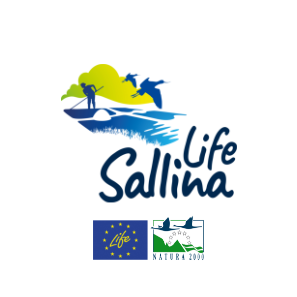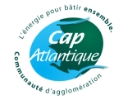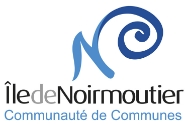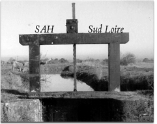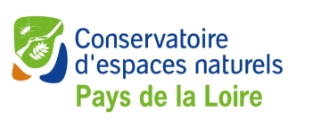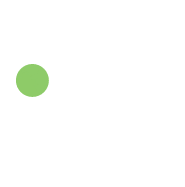context
» The site
Located south of the Loire estuary, the Ile de Noirmoutier is the southern fringe of Bourgneuf Bay and the southern limit of the Armorican massif. If the Marshes of the Ile de Noirmoutier extend over the four communes of the Island, they are mainly present in the northern half, in the communes of L’Epine and Noirmoutier. The marshes of Noirmoutier Island cover an area of around 1,625 ha.
The salt marshes of Noirmoutier Island cover almost 33% of the island’s territory. Generations of salt workers and peasants have shaped the Bourgneuf Bay foreshore over the centuries.
The Noirmoutier island is part of the Natura 2000 and Ramsar site “Marais Breton, Bourgneuf bay, Île de Noirmoutier and Monts forest” (Special Conservation Area FR5200653 and Special Protection Zone FR5212009).
» The biodiversity
The salt marshes of Île de Noirmoutier offer a mosaic of habitats more or less under the influence of salt water, conducive to the development of a very diverse flora and fauna. Coastal lagoons, priority habitat, and associated habitats of community interest are thus very present in the marsh area. Of anthropogenic origin, the salt marshes of the island of Noirmoutier owe their current diversity to varied management methods, certain basins being the subject of economic, salicultural, shellfish or aquacultural activity, others being used for leisure activities or not subject to any intervention. It is also an important nesting place, migratory stage and wintering site for many bird species.
The island has two nature reserves (regional and national) which cover 11% of the marshes on the island of Noirmoutier.
Several bird species, covered by the Birds Directive, use the island territory:
- The Pied avocet (Recurvirostra avosetta): 500-1300 max wintering and 250-300 max breeding pairs over 5 years on the Ile de Noirmoutier.
- The Common Tern (Sterna hirundo): 250-300 max. breeding pairs over 5 years on the Ile de Noirmoutier.
- The Common Redshank (Tringa totanus): 100-500 max. wintering over 5 years on the Isle of Noirmoutier.
- The Black-tailed godwit (Limosa limosa limosa): 500-2000 max. wintering over 5 years on the Isle of Noirmoutier.
For wildlife we can also cite the European Eel (Anguilla anguilla) or the Leste with great stigmas (Lestes macrostigma) with large numbers in the National Natural Reserve of the Müllembourg marshes and the Oudinières marsh. (Reference to “Leste” page).
For the flora, the sea sagebrush (Artemisia maritima) is mainly present on the catchment area of the mill’s estate (reference to page “sagebrush”).
The Tolypelle saline (Tolypella salina) is also present on the marshes of Ile de Noirmoutier (see page “Tolypelle”).
» Socio-economic activities
Today, these marshes are characterized by various socio-economic activities.
If the salt-producing activity suffered a strong decline between the years 1945 to 1990, for twenty years, the saliculture knows a new boom. The site corresponds to the third pole of French production of sea salt and constitutes with the Marshes of Guérande and Mès, other territory of LIFE Sallina, the two main sectors of artisanal production of salt. Salt farming activity represents 55% of the wetland. The other economic sectors present are oyster farming (9%), fish farming (3%), and farming (8%).
» The threats
The main threats include the deterioration of hydraulic functioning, the disappearance of the mosaic of habitats and the homogenization of biodiversity through the proliferation of invasive species.
Nos actions
On the Île de Noirmoutier, several actions are planned:
– Carrying out preparatory studies (regulatory studies prior to the work and study to improve knowledge with the ecological characterization of Animation and land acquisition on pilot sites.
– Marsh restoration works on the pilot sites and the fight against invasive exotic species on the LIFE perimeter.
– Biological monitoring (Avocet, Odonata monitoring, etc.) and physicochemical measurements (salinity, pH, etc.).
– Raising awareness among the general public and socio-economic players about the biodiversity of salt marshes: intervention in school environments to raise awareness among 400 school children in the area, technical days for socio-professionals, information panels, guide to good practices, etc…
Sites pilotes
On the Île de Noirmoutier, a LIFE perimeter of 1,624.5 ha has been defined. It is within this perimeter that the CCIN carries out its actions to fight against invasive exotic species and to improve knowledge with the ecological characterization of the scirpaies.
Within this perimeter, 5 pilot sites have also been defined on an area of almost 50 ha:
Sur la commune de Noirmoutier en l’Ile :
→ Doridon (7,7 ha)
→ Champierreux (15,4 ha)
→ Grondin (2,3 ha)
→ Boucaud (8,7 ha)
Sur la commune de L’Epine :
→ Girant (15,1 ha)
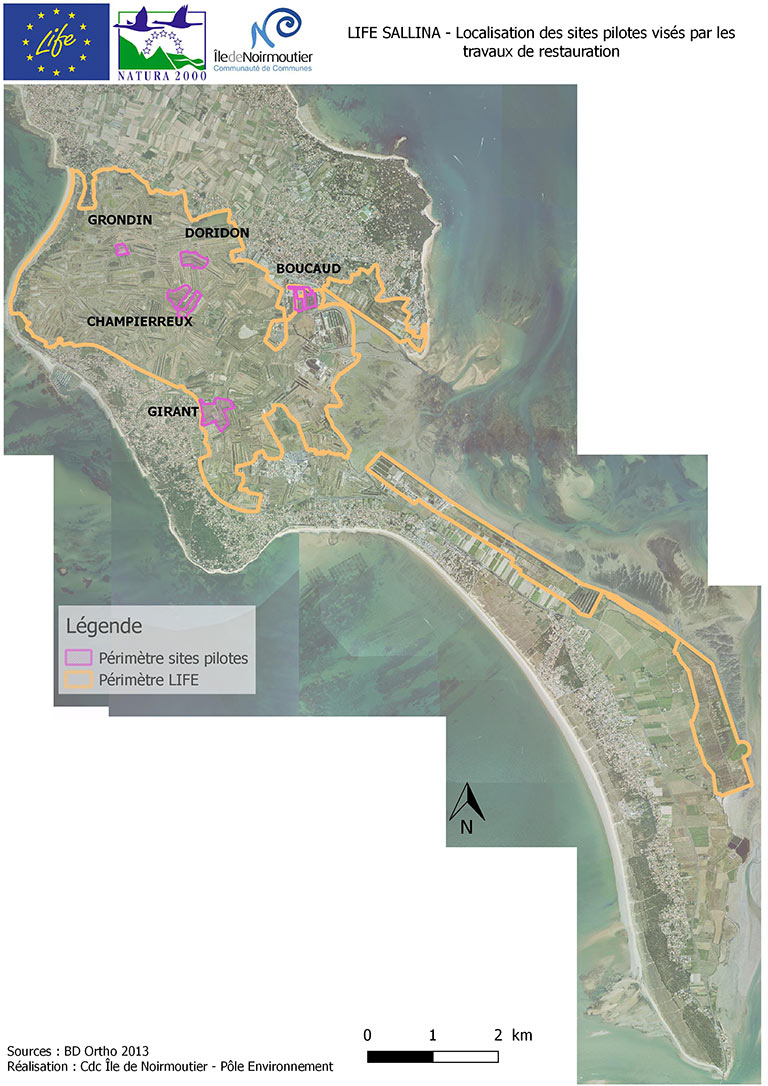
Location of pilot sites (source: CCIN)
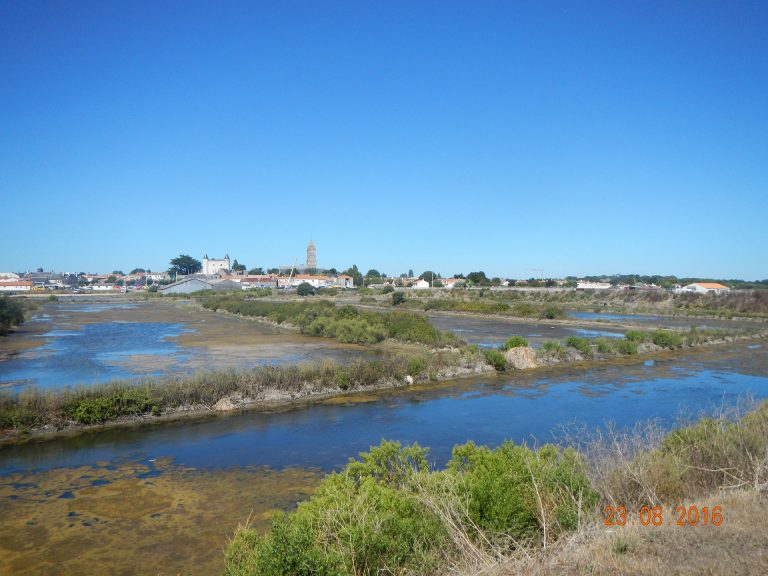
The Boucaud pilot site (photo credit : CCIN)
These sites were chosen because they presented marshes in salicole abandonment or without use and included an ecological interest or potential for restoration. A large part of the plots are public property and it has been chosen to integrate coherent hydraulic units.
Results
En attente des premiers éléments.


